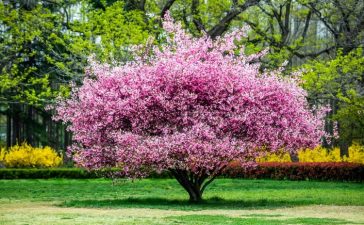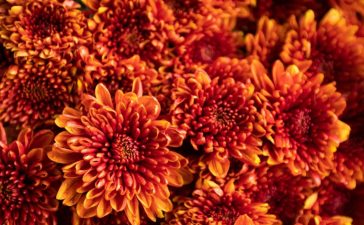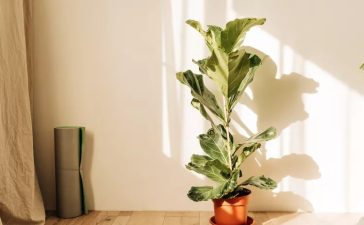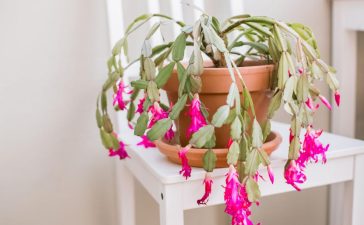“If you’ve been dealing with unwanted guests in the form of pests near your home or garden, you might be wondering how to safely reclaim your space. One effective solution could be creating a DIY yellow jacket trap. Yellow jackets pose a potential threat to humans, pets, and honey bee populations. Their stings can be painful, and unlike bees, they can sting multiple times without dying. Furthermore, they are known to attack honey bees and raid their hives for honey and larvae.
Despite their negative reputation, yellow jackets do play a crucial role in the ecosystem as pollinators and natural pest controllers for crops. However, if they are encroaching on your property, you can take steps to protect your family, pets, and guests by crafting a simple yellow jacket trap using readily available supplies. We sought advice from expert Jason Scott, Vice President of HomeShield Pest Control, on the best methods for creating a homemade yellow jacket trap.”
Considerations Before You Get Started
Yellow jackets are known for their aggressive nature, and a single sting can be life-threatening for those with allergies. Yellow jacket hives can house thousands of these wasps, and they will fiercely defend their nest if disturbed. If you or a family member is allergic to wasp stings and there’s a yellow jacket nest nearby, it’s strongly recommended to seek the assistance of a pest control specialist instead of attempting to remove the nest yourself.
It’s important to note that yellow jackets do play a role in the environment, providing certain ecological benefits. Therefore, unless the nest poses a direct threat to your home, garden, or safety, it’s advisable to leave it undisturbed.
What You’ll Need
Materials You’ll Need:
- Empty 2-liter plastic bottle
- Scissors or sharp knife
- Scotch tape
- Apple cider vinegar
- Sugar
- Banana peel
- Mixing spoon
Instructions:
1. Gather Your Supplies: Start by collecting all the materials required to construct your yellow jacket trap. A 2-liter plastic bottle is recommended because of its size, which can catch a substantial number of yellow jackets at once.
2. Cut Off the Top of the Bottle: Prepare the trap by cutting off the top one-third of the plastic bottle using scissors or a knife. Set aside the bottle top for later use. You can dispose of the bottle cap as it won’t be needed.
3. Add Ingredients: Into the bottom half of the bottle, pour ½ cup of sugar, ½ cup of water, and ½ cup of apple cider vinegar.
4. Mix the Ingredients: After adding the ingredients, stir them together using a mixing spoon until they completely dissolve.
5. Add the Banana Peel: A crucial ingredient for your trap is a banana peel. Place the banana peel into the liquid in the bottom of the bottle.
6. Create the Trap: Retrieve the previously cut bottle top and place it upside down in the opening of the bottle with the mixture. Secure the two pieces together using scotch tape to hold the bottle top in place.
7. Set the Yellow Jacket Trap: Ensure your safety when setting the trap, as yellow jackets can be dangerous. Avoid wearing bright colors, perfumes, or sweet-smelling lotions that may attract them to you. Also, refrain from approaching the nest itself, as disturbing it can provoke an attack.
Place the trap away from your house or areas frequently occupied by your family and pets. The enticing scent will draw the insects in. Yellow jackets can travel over 1,000 feet from their nest in search of food. Leave the trap in an area where you’ve observed yellow jackets, but away from your usual walking paths.
Tips to Deter Yellow Jackets:
There are additional measures you can take to deter yellow jackets from establishing nests in your outdoor space:
- Spray Peppermint Oil: Prevent yellow jackets from entering your home through windows and doorways by using peppermint oil. Mix 15 drops of peppermint oil with a cup of water in a spray bottle. Thoroughly shake the mixture and apply it to areas to keep yellow jackets away.
- Plant Herbs and Flowers: Repel yellow jackets by planting various herbs, plants, and flowers that they dislike around your home and garden. Herbs such as peppermint, spearmint, geraniums, marigolds, basil, thyme, and eucalyptus are known to deter wasps and yellow jackets. This not only helps keep them at bay but also adds beauty and fragrance to your surroundings.
- Keep Garbage Cans Away From the House: Yellow jackets are attracted to food scraps and odors. To prevent them from getting close to your home, use garbage cans with lids and keep them at a distance. This discourages them from building nests near entryways or window sills.
You Might Also Like
Top 10 Expert-Recommended Ornamental Trees for Curb Appeal
To enhance your landscaping and curb appeal, planting ornamental trees can add a touch of beauty and elegance to your...
Radiant Mums: A Guide to Caring for Your Fall Chrysanthemums
Chrysanthemums, commonly known as mums, are cherished for their vibrant beauty and captivating sweet and spicy fragrance, making them a...
Expert Tips on Choosing and Caring for Indoor Trees
Do you have a corner in your home that's crying out for a touch of green? Indoor trees can be...
How to Easily Propagate Christmas Cactus as Unique Holiday Gifts
Certainly, one of the most rewarding aspects of nurturing houseplants is the chance to multiply your greenery and share the...










